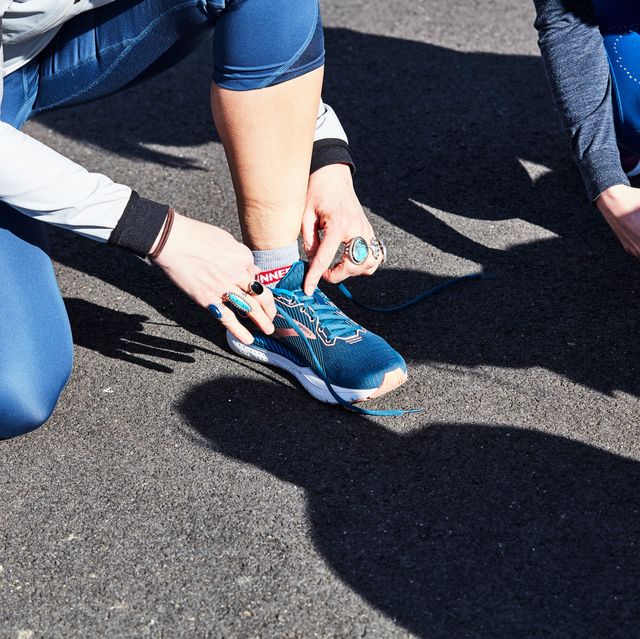Where Do Marathon Runners Pee?
During marathons, runners typically pee discreetly behind bushes or porta-potties along the course. They aim for minimum time loss without interfering with their race performance.
This article discusses where marathon runners find relief, explores the challenges they face, and offers tips to manage this issue effectively.

Credit: www.china.org.cn
The Challenge Of Peeing During A Marathon
Marathon runners face the challenge of finding bathroom breaks. Many resort to peeing discreetly off the course or using portable toilets along the route. The topic of where marathon runners pee is often a humorous yet essential aspect of the sport.
Introduction: The Challenge of Peeing During a MarathonLack Of Restroom Facilities
Marathons often lack sufficient restroom facilities, making it challenging for runners to take a bathroom break.Risk Of Disqualification
Runners face the risk of disqualification if they leave the course to pee, as it violates race rules. Running a marathon is no easy feat. It tests a runner’s mental and physical endurance. The need to pee during a marathon poses a significant challenge.Lack Of Restroom Facilities
In many marathons, restroom availability is limited, forcing runners to improvise their bathroom breaks. Runners must balance hydration needs with the risks of needing to pee during the race.Risk Of Disqualification
Leaving the course to find a restroom can lead to disqualification, putting runners in a tough spot. Some runners opt to relieve themselves discreetly along the course, despite the risks of penalties. Ultimately, managing bathroom breaks during a marathon requires strategic planning and quick thinking.Strategies For Peeing During A Marathon
Marathon running requires endurance, determination, and careful planning. One aspect that many runners wonder about is how marathoners manage bathroom breaks during a race. The truth is, finding a restroom while running a marathon can be challenging, especially when you’re focused on setting a personal best. That’s why marathon runners have developed various strategies to relieve themselves during the race without losing precious time. In this article, we will explore two essential factors to consider when planning your bathroom breaks: hydration and timing, as well as clothing considerations to ensure a smoother marathon experience.
Hydration And Timing
Staying properly hydrated is crucial during a marathon, but it can also lead to the urge to pee. While you may be tempted to avoid drinking too much in an effort to prevent needing a bathroom break, dehydration can have serious consequences on your performance and health. Instead, follow these tips:
- Drink small sips of water at each water station, hydrating your body without overwhelming your bladder.
- Avoid consuming excessive amounts of caffeine or alcohol before the race, as they can increase your need to urinate.
- Plan your bathroom breaks strategically. If possible, find a port-a-potty at the start line and use it before the race begins. This way, you can start with an empty bladder and minimize the need to go during the race.
Clothing Considerations
What you wear during a marathon can significantly impact your ability to find moments to relieve yourself. Some clothing considerations to keep in mind include:
- Opt for running shorts or leggings with a built-in brief or liner. This feature can provide additional support and minimize the risk of accidental leaks.
- Choose dark-colored clothing or patterns that help camouflage any potential accidents or visible wetness. Nobody wants an embarrassing moment captured on a race photo!
- For female runners, consider wearing a sports bra with moisture-wicking properties to help keep the chest area dry and prevent chafing.
By taking these simple strategies into account, you can better plan your bathroom breaks during a marathon without sacrificing your performance or comfort.
Etiquette And Considerations
As marathon runners push their bodies to the limits during long-distance races, the question of bathroom breaks and where to relieve oneself inevitably arises. While it may not be the most glamorous topic, knowing the etiquette and considering the implications is crucial for a smooth and respectful race experience. In this section, we will explore how to respect fellow runners and minimize the environmental impact.
Respecting Other Runners
When participating in a marathon, it’s essential to remember that you are not alone on the course. Thousands of runners are striving to achieve their personal best, and respecting one another plays a significant role in maintaining a positive atmosphere. Here are some guidelines:
- Plan ahead: Make use of the race facilities before the start to minimize the need for pit stops during the race.
- Follow race guidelines: Familiarize yourself with the race rules regarding bathroom or porta-potty usage. Some races have designated areas or specific checkpoints where runners can take a quick break.
- Be mindful of others: If nature calls during the race, try to find a secluded spot that is away from the main course and other runners. This way, you can ensure your privacy without causing any distractions or inconveniences to fellow competitors.
- Communicate politely: If you find yourself in a situation where you need to stop suddenly, communicate your intentions clearly and politely to nearby runners. This way, they can adjust their pace accordingly and avoid any potential collisions.
Environmental Impact
As runners, we have a responsibility to minimize our impact on the environment, even during marathon races. Considering the following points will help reduce the ecological footprint:
- Utilize provided facilities: Most organized races offer various bathroom facilities along the route, including portable toilets. Utilize these resources whenever possible to avoid leaving any waste in natural surroundings.
- Avoid littering: If you find yourself without access to a restroom and must relieve yourself, do so responsibly by avoiding areas with wildlife or sensitive ecosystems. Additionally, take care to properly dispose of any waste in designated bins at the next opportunity.
- Follow Leave No Trace principles: Adhering to these principles, which include principles like “Pack it in, pack it out” and “Respect wildlife,” will ensure that the natural environment remains unharmed and preserved for future generations of runners.
By respecting the needs of fellow runners and minimizing our environmental impact, marathon participants can enjoy a fulfilling race experience while upholding responsible behavior. Remember, the race is not just about personal achievements but also about contributing positively to the running community and the environment.

Credit: metro.co.uk
Female-specific Considerations
Discussing female-specific considerations during marathon running includes addressing the question of where female runners go to the bathroom during a race. This aspect is crucial for female athletes to plan ahead and ensure their comfort and performance during the event.
Proper hydration strategies and restroom availability are key factors to consider for female marathon runners.
Female marathon runners face unique challenges when it comes to managing their bathroom needs during a race.Challenges And Solutions
- Challenges: Limited bathroom facilities, privacy concerns, menstrual cycle considerations.
- Solutions: Practice peeing discreetly outdoors, use menstrual cups, plan bathroom stops strategically.
Post-marathon Support And Cleanup
Completing a marathon is a monumental achievement, but the need for post-marathon support and cleanup is often overlooked. Adequate facilities and resources, as well as personal hygiene tips, are essential for runners to recover and maintain cleanliness after the race.
Facilities And Resources
After crossing the finish line, runners often require access to facilities and resources for post-marathon support and cleanup. Organizers should ensure the availability of portable toilets and restroom facilities, strategically placed throughout the event area. Volunteers and medical staff can guide runners to these facilities, minimizing congestion and wait times.
Personal Hygiene Tips
Personal hygiene is crucial after completing a marathon. Runners should have access to disposable wipes, hand sanitizers, and changing tents to freshen up and change their clothes post-race. A quick wipe-down and change of clothes can significantly improve comfort and hygiene, reducing the risk of skin irritation and infections.
Credit: www.quora.com
Frequently Asked Questions On Where Do Marathon Runners Pee
What Do Marathon Runners Do If They Need The Toilet?
Marathon runners use portable toilets located along the race route for bathroom breaks. They need to plan their stops carefully to avoid losing too much time.
Where Do You Go To The Bathroom When Running A Marathon?
During a marathon, portable toilets are typically set up along the race route to provide runners with bathroom facilities. These toilets are strategically placed at various intervals to accommodate the participants’ needs.
What Do People Do If They Have To Pee During A Marathon?
Runners use portable toilets along the marathon route to relieve themselves without disrupting their race pace.
Conclusion
Marathon runners strategically plan bathroom breaks ensuring race focus and performance. Portable toilets, bushes, and discreet spots offer relief options. Proper hydration and pre-race emptying are crucial for runners’ comfort and pace. Understanding race logistics and personal needs help in navigating such challenges effectively.
Prioritizing physical comfort contributes significantly to runners’ success.






